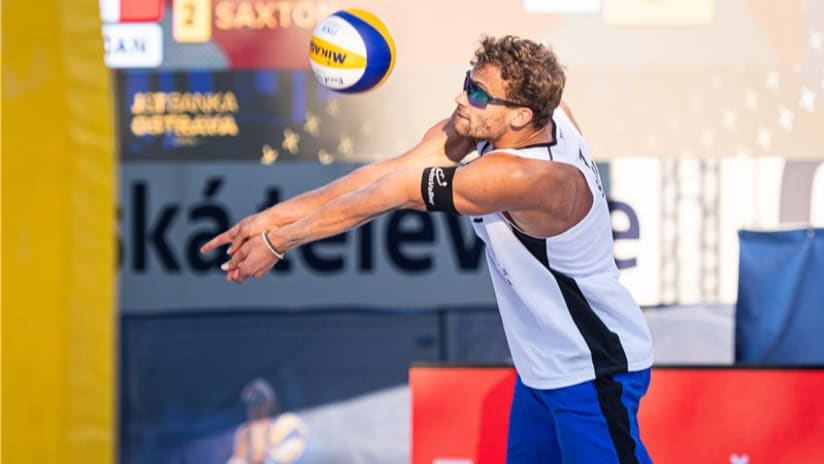The marathon portion of this Olympic race is finished. Thirty-three months’ worth of tournaments have been played, with 15 teams of each gender claiming spots via the Olympic rankings. Those berths were earned with the cumulative total of their best 12 finishes over the course of the Olympic qualifying period.
Beach volleyball gears up for Continental Cup Finals
Countries to earn Olympic berths via Continental Cup Finals around the world next week
Published 10:48, 19 Jun 2021

Marco Krattiger will compete in the CEV Continental Cup for Switzerland.
It is a long and arduous process, one that crisscrosses the globe, hops from continent to continent, country to country. That process ended in Ostrava.
Now the sprint begins.
Five berths to the Tokyo Olympics for each gender remain unclaimed.
Those five berths will be earned via the Continental Cup Finals, which will be competed in Europe; Asia; Africa; South America; and the NORCECA region, which includes North America, Central America, and the Caribbean.
Here is how it works.
For the sake of simplicity, we are going to use the European Continental Cup as our example throughout this story. There are 16 teams in the final phase of the CEV Continental Cup vying for a single Olympic berth. Typically, a tournament is one team vs. another team, with the winning team moving on, the losing team going home.
This is where the Continental Cup is unique – and a world of fun.
The Continental Cup is the one scenario in which countries compete against other countries. The top two teams from each of the 16 countries in the final phase compete together, in a sense. In the first men's round of the CEV, for instance, the Netherlands will play Estonia.
This matchup will feature the No. 1 team from the Netherlands vs. the No. 2 team from Estonia, and vice versa. If one country wins both matches, they move on to the next round. If, however, there is a split, a Golden Match is played, where the federation will choose one team to compete against the other country’s one selected team. The winner of the Golden Match moves on.
There is, of course, a condition. If your team has already qualified for the Olympics, you cannot help your country earn an additional spot via Continental Cup. The Netherlands, then, will be without the services of Alex Brouwer and Robert Meeuwsen, who have already qualified via points.
And, if two teams from one country have already qualified for the Olympics, that country can no longer compete in the Continental Cup. This is why Serbia was bumped into the final phase of the CEV Continental Cup: Poland’s Bartosz Losiak and Piotr Kantor made a late push, finishing the Olympic qualifying period inside of the coveted top-15, claiming an Olympic spot and Poland’s second. This pushed Poland out of the Continental Cup, making room for Serbia to move in.
Now, one question many ask: if there are two teams competing together, but only one Olympic berth is earned, how does the federation choose which team goes to the Olympics?
An excellent question!
The answer is that each federation can decide on its own. Some, like Canada, will have a playoff between the two teams who competed in the Continental Cup. In this case, should Canada win the NORCECA Continental Cup – far from a guarantee, with strong teams from Cuba and Mexico in the mix – Sam Schachter and Sam Pedlow and Grant O’Gorman and Ben Saxton would play a single match to determine which team gets to represent Canada in the Olympics.
Other federations simply choose which team will go.
At the end of the day, the Olympic berth is earned as a federation, not an individual team, so it is entirely up to each country’s federation to determine what to do with its Olympic berth. And at the end of the month, the field for the Tokyo Olympic Games will be set.







